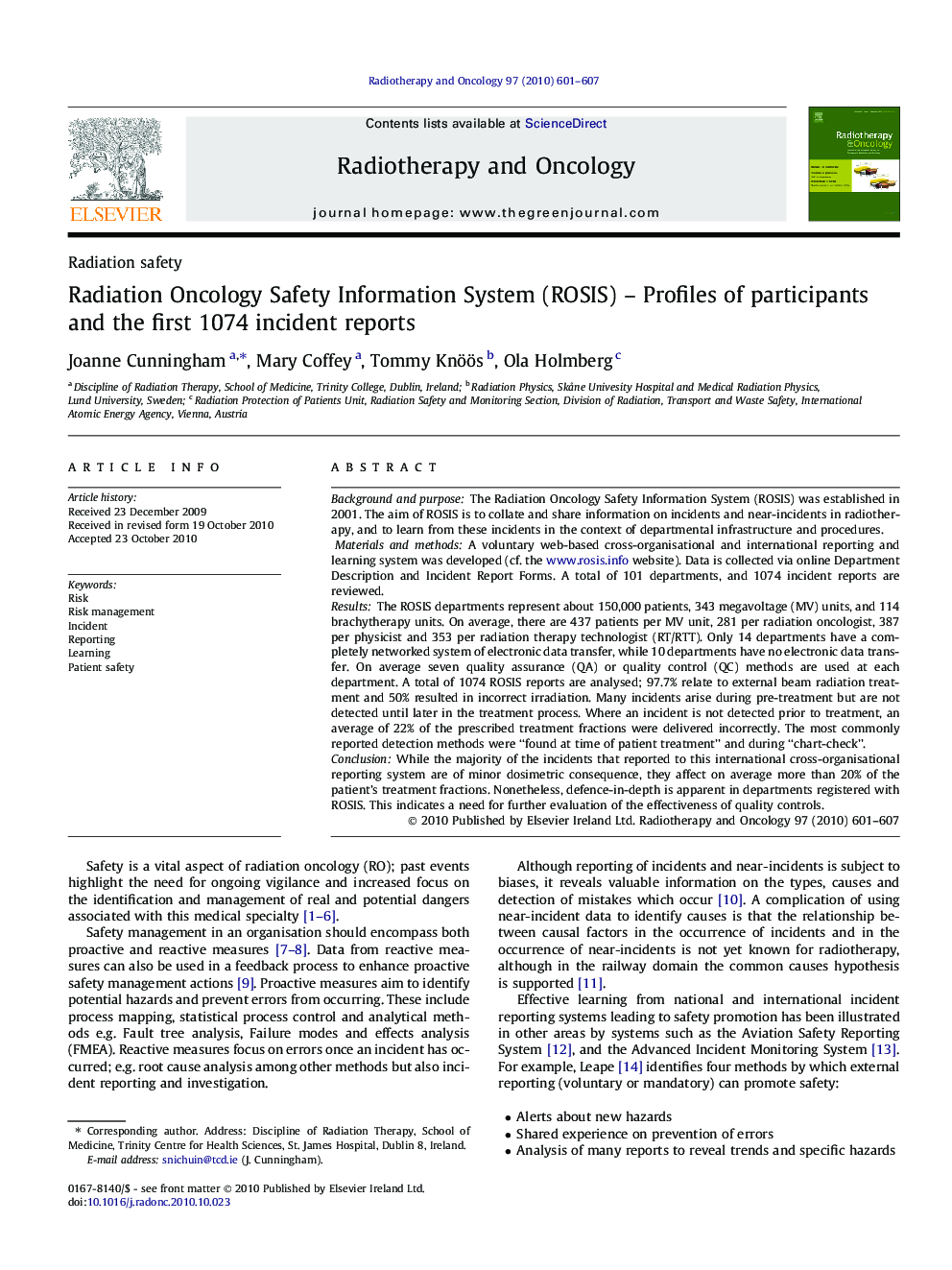| کد مقاله | کد نشریه | سال انتشار | مقاله انگلیسی | نسخه تمام متن |
|---|---|---|---|---|
| 2159223 | 1090852 | 2010 | 7 صفحه PDF | دانلود رایگان |

Background and purposeThe Radiation Oncology Safety Information System (ROSIS) was established in 2001. The aim of ROSIS is to collate and share information on incidents and near-incidents in radiotherapy, and to learn from these incidents in the context of departmental infrastructure and procedures.Materials and methodsA voluntary web-based cross-organisational and international reporting and learning system was developed (cf. the www.rosis.info website). Data is collected via online Department Description and Incident Report Forms. A total of 101 departments, and 1074 incident reports are reviewed.ResultsThe ROSIS departments represent about 150,000 patients, 343 megavoltage (MV) units, and 114 brachytherapy units. On average, there are 437 patients per MV unit, 281 per radiation oncologist, 387 per physicist and 353 per radiation therapy technologist (RT/RTT). Only 14 departments have a completely networked system of electronic data transfer, while 10 departments have no electronic data transfer. On average seven quality assurance (QA) or quality control (QC) methods are used at each department. A total of 1074 ROSIS reports are analysed; 97.7% relate to external beam radiation treatment and 50% resulted in incorrect irradiation. Many incidents arise during pre-treatment but are not detected until later in the treatment process. Where an incident is not detected prior to treatment, an average of 22% of the prescribed treatment fractions were delivered incorrectly. The most commonly reported detection methods were “found at time of patient treatment” and during “chart-check”.ConclusionWhile the majority of the incidents that reported to this international cross-organisational reporting system are of minor dosimetric consequence, they affect on average more than 20% of the patient’s treatment fractions. Nonetheless, defence-in-depth is apparent in departments registered with ROSIS. This indicates a need for further evaluation of the effectiveness of quality controls.
Journal: Radiotherapy and Oncology - Volume 97, Issue 3, December 2010, Pages 601–607